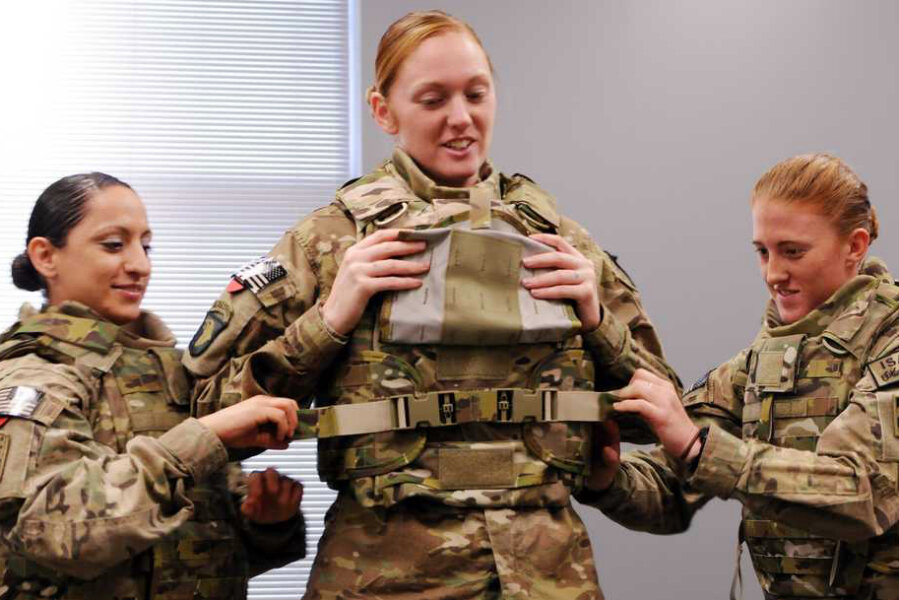How the military is designing new tactical gear for female soldiers
Loading...
When Defense Secretary Ash Carter directed the US military on Thursday to open up combat roles to women, the decision created an interesting technology problem: how should female combatants be outfitted and equipped?
A tactical vest designed to protect a man’s torso is likely to fit a woman poorly, and to make it difficult for her to crouch and aim a rifle. Body armor meant to protect a man’s lower body from shockwaves and shrapnel won’t do the same for a woman.
The military branches have anticipated this problem for a while, and some have already begun redesigning gear to fit a wider range of body types.
The Army, which has allowed women to serve in combat roles since 2013, issued a female version of the Improved Outer Tactical Vest in Afghanistan the year before. The new vest has a tapered construction, better shoulder and waist adjustability, and a redesigned collar that won’t get caught in longer hair.
The redesigns extend to next-generation military gear, too, including the prototype Soldier Protection System (SPS) being developed by DARPA, the Army, and eight commercial partners including 3M subsidiary Ceradyne. The SPS is a full suit of hardened body armor that will better protect soldiers from bullets, sharp objects, and even fires. It will also include sensors that can monitor soldiers’ health in real time, and combat eyewear that can transition from outdoor to indoor mode in under a second.
The Army is working with its partners to develop male and female versions of the SPS, re-sizing components as necessary and even using lasers to measure precise details, according to Nick Stockton at Wired. The final SPS, which is expected to enter production in 2016, will fit 94 percent of male and female soldiers – everyone except for those with very large or very small frames.
One important goal of the SPS is to lighten loads for all soldiers. Right now, soldiers have to wear and carry up to 120 pounds of gear, which quickly gets tiring on missions and fatigues joints over time. Much of that weight comes from body armor plates inserted into garments, so the SPS will use lighter composite materials that offer just as much protection as today’s steel or ceramic plates. The SPS will also combine multiple garments into modular items, so that soldiers don’t have as many different articles to adjust and worry about. And lighter, more flexible armor that fits a wider range of body shapes will benefit male and female troops alike.








